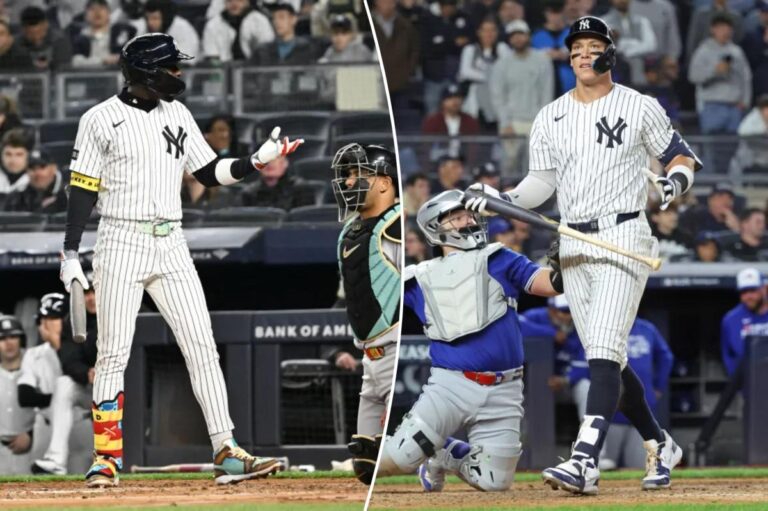Aaron Judge: A Game-Changer with the Automated Ball-Strike Challenge System
Aaron Judge’s impact on Major League Baseball (MLB) has been monumental, especially considering his performance in recent years. He’s coming off an impressive three-year stretch, boasting some of the finest seasons in baseball history. However, 2023 took a different turn due to a toe injury that cut his season short, affecting both his performance and that of the New York Yankees.
The Future is Here: Automated Ball-Strike Challenge System
Looking ahead to the 2026 season, Judge will gain access to an innovative tool designed to bolster his already formidable hitting skills: the Automated Ball-Strike Challenge System (ABS). With its debut in MLB set for next year, following successful trials in the minor leagues and events like the All-Star Game, the ABS promises a dynamic shift in how the game is played.
How the ABS Works
The ABS introduces a new layer to the game mechanics, empowering players with more control. Here’s how it functions:
- Instant Challenges: Players, including pitchers, catchers, or hitters, can challenge the call of a pitch immediately after it crosses the plate.
- Game Mechanics: Each team has two challenges per game, and they can retain them if the challenges are successful.
This technology directly addresses long-standing complaints from Judge and the Yankees about poor ball and strike calls, particularly on pitches outside the strike zone.
A Little Help from Statcast
Statcast data reveals that Judge has often been a victim of misjudged pitches.
- In the 2025 regular season, Judge experienced the eighth-highest rate of incorrect calls, with a 2.1% bad call percentage.
- Ex-Yankee Gleyber Torres recorded the highest with 2.5%.
Historically, Judge has been at the top of this list:
- 2021: Led the league in bad calls.
- 2023: Second-highest bad calls against him.
Expect More from the Yankees’ Batting Lineup
With the introduction of the ABS, the Yankees, known for valuing patient at-bats, could enhance their offensive strategy. The team’s emphasis on drawn-out at-bats has already produced an array of talent, including Paul Goldschmidt and Brett Gardner. The query arises: how aggressively will teams utilize their challenges?
Potential Landscapes for Other Teams
- Mets Players: Stars like Juan Soto, Pete Alonso, and Francisco Lindor might also benefit from this system, as they’ve faced numerous incorrect calls in the past.
Strategic Considerations with ABS
The use of the Challenge System adds an intriguing layer of strategy to the game. A wasted challenge early in a match could potentially impact a team’s chances later on. As one National League scout noted, “Organizations will have to come up with how they want to use it. The Yankees are usually good with advancements, but this one is tricky.”
Balancing Act: Challenges and Stealing Strikes
While the ABS allows for player-initiated challenges, there’s still a premium on skills like stealing strikes. Austin Wells, a Yankees catcher, has shown a particular aptitude for this skill, making it a valuable asset—even as automation becomes more prevalent in officiating pitches.
Conclusion
The dawn of the Automated Ball-Strike Challenge System represents a turning point in MLB, with Aaron Judge poised to leverage this new technology to continue redefining his game. As the 2026 season approaches, both teams and players will need to adapt to this dynamic, forever changing how the game is played—bringing fairness into the strike zone and maximizing performance.
For further insights on how these developments will shape the future of MLB, follow updates and detailed analyses from ESPN and Baseball America.


